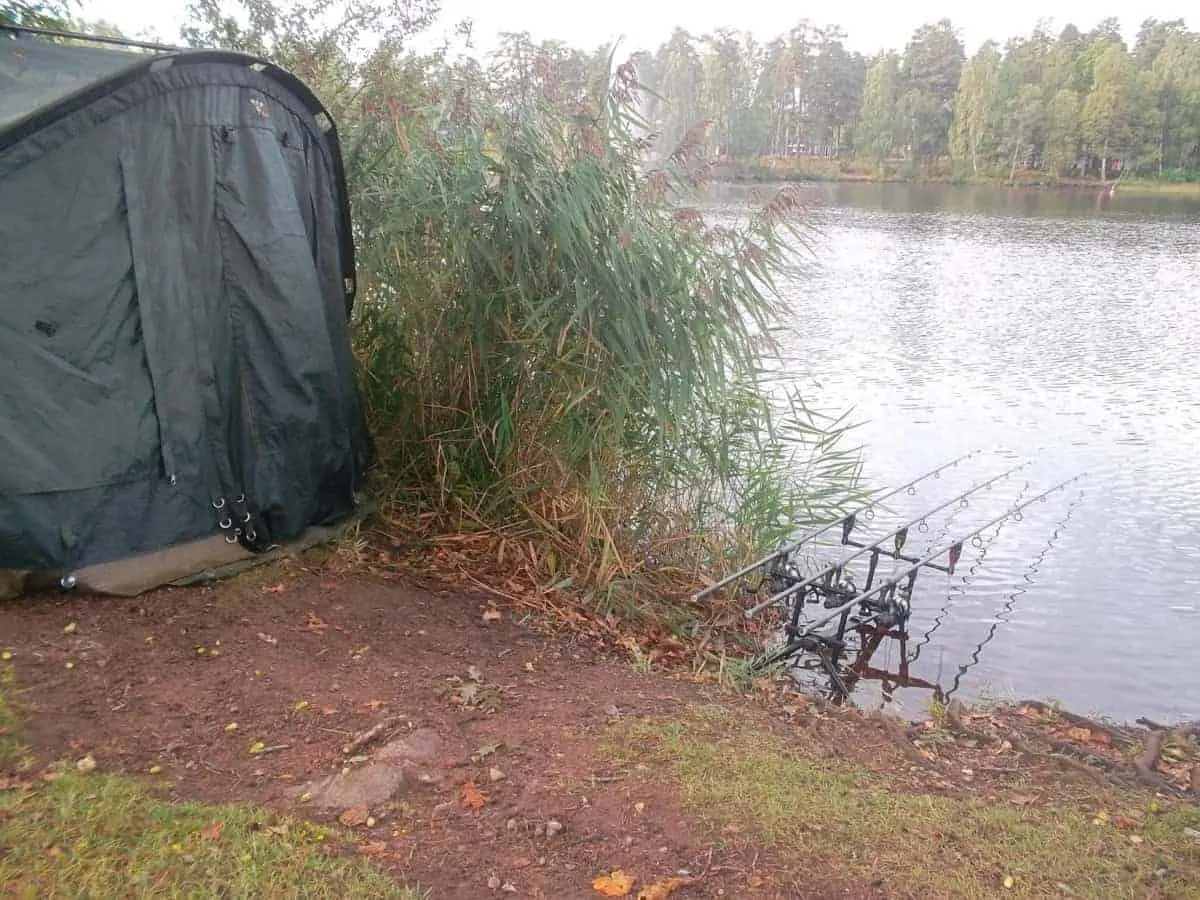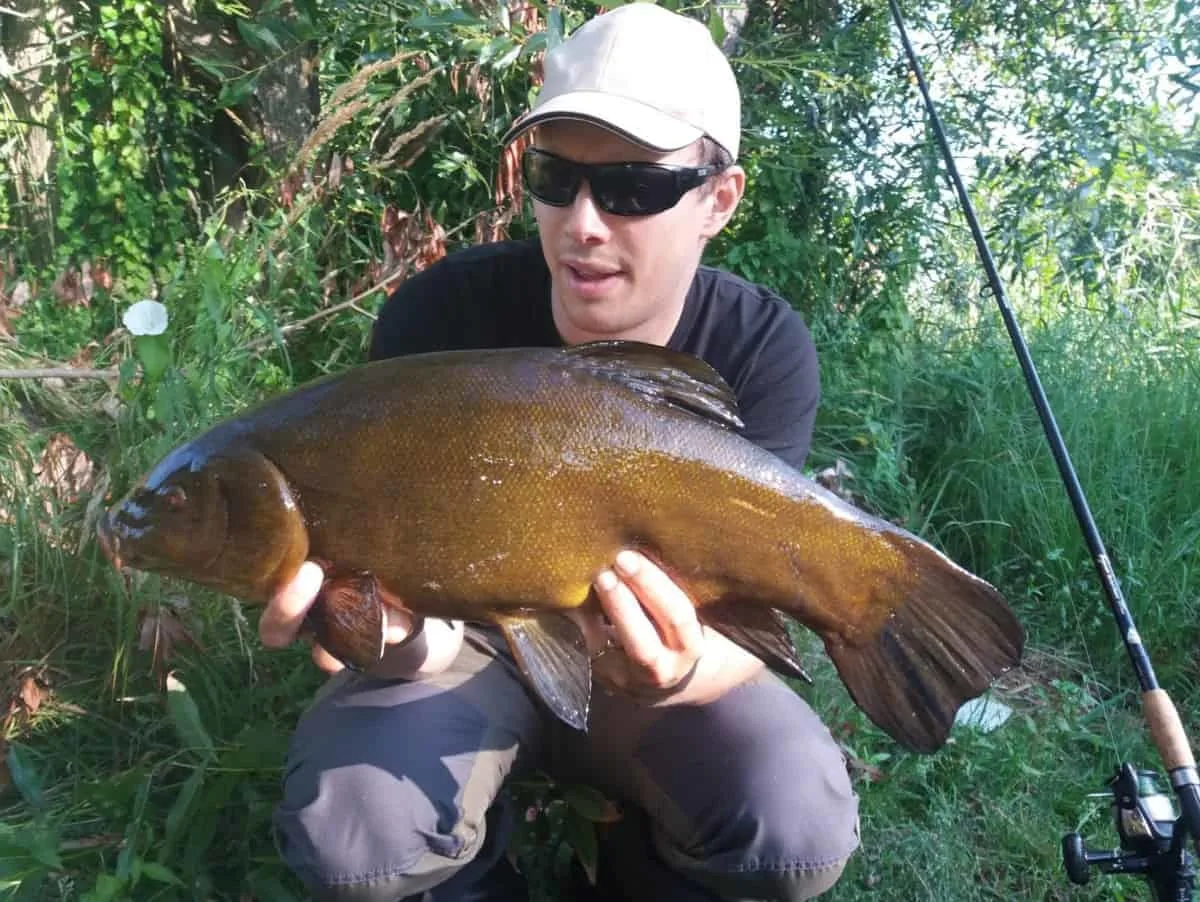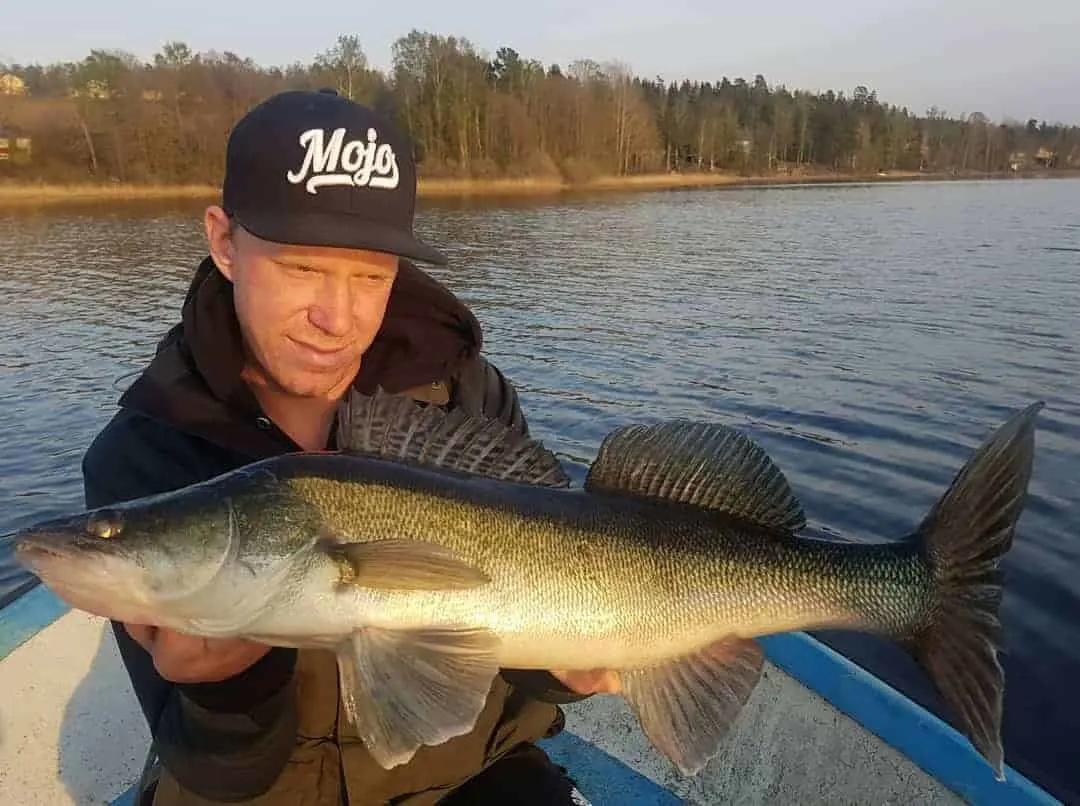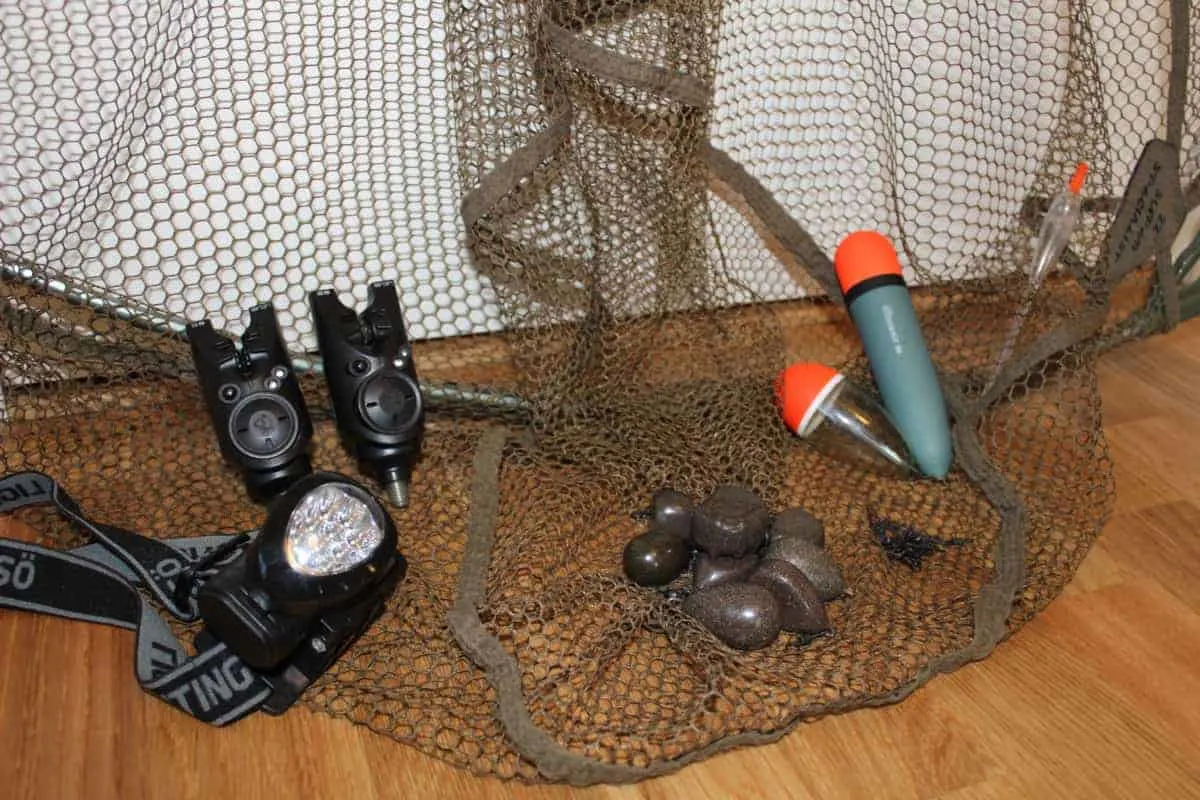The fishing sport has many different sub-genres and a rather particular such is called specimen fishing. I have been a specimen fisherman myself for many years, and so I wanted to answer the question “what is specimen fishing?” with this ultimate beginner’s guide.
I must warn you in advance; this type of angling is extremely fun and addictive but iT also requires a lot of training, time, and dedication, which is why you should get into it wholeheartedly.
If that is the case, then this guide will give you all the knowledge and tools you need in order to become a successful specimen angler!
What Is Specimen Fishing?
Specimen fishing implies going for quality over quantity when it comes to catching fish. Rather than trying to simply get the fish to bite and catch as many as possible, specimen fishermen target only the biggest, or at least the bigger, specimen in a venue.
Specimens are specific fish of any given species, depending on what type of fish the specimen hunter (which is a commonly used term for specimen fishermen) has his or her eyes on.
Either, a specimen fisherman targets a certain size and weight of a fish, or he actually targets a specific fish. The former applies to virtually all possible species, the latter mostly to carp.
Carp is a fish species that has very individual and often unique features and characteristics in each specimen, which makes many carp easy to separate from the rest of the stock when having been caught.
RELATED READING: If you want to learn more about the unique features of the carp, you can read this related article: What Is the Difference Between Common Carp and a Mirror Carp?
Another extremely fun aspect of specimen fishing is the fact that you can always set higher goals and, thereby, constantly try to beat your own PB (your personal best).
In other words, specimen fishing is a battle against yourself and your own, personal limits. It can actually teach you a lot about goal setting and determination!
What Else Is Typical for Specimen Fishing?

Time
Specimen anglers spent vast amounts of time on the bank! We are talking days, and sometimes, even weeks. This is why specimen fishing is not for everyone. Many people simply do not find the time to fish that much, or they do not have the patience.
The thing is, if you are serious about targeting above average size to very large fish, it can sometimes take a lot of time before you actually find and catch them.
And that is if you already possess the knowledge about where, when, and how to catch them, which can otherwise consume plenty of time as well.
Camping
Longer sessions go hand in hand with sleeping outdoors, and hence, camping gear can sometimes be essential when specimen fishing.
Let’s say you are out fishing for carp for an entire weekend, you will need both a bivvy (a special fishing tent), a sleeping bag and mat, a chair, cooking equipment, food, a towel, extra clothing, toilet paper, etc.
The amount of stuff a fisherman puts into his car prior to going fishing usually reveals if he indeed is a specimen hunter!
Money
All that time and gear demand a certain amount of money. Specimen fishermen can invest substantial parts of their income in their hobby.
If you are targeting a series of different species that cannot all be found in venues close to you, then you will also have to spend a lot of money on gas, just in order to actually get to the venues that have the potential of producing specimen sized fish.
But don’t get me wrong; if you are a frequent reader of Strike & Catch articles, you know that this site is all about well-optimized fishing, which also includes the economic aspect of the sport.
Gas money is hard to cut down on if you really have to travel to a lot of faraway venues, but gear (rods, reels, tackle, baits, etc) can certainly be economically optimized and adapted to your personal budget!
First and foremost, it will always be your knowledge and experience that will catch you specimen fish, not the latest and most expensive gear that the market throws at you.
More on that in the “What gear is needed for specimen fishing” section below!
What Fish Do You Target When Specimen Fishing?

Historically, the most common specimen fish has always been the carp, but since the 1980s, many more species have joined the ranks of specimen fish. Among these are the following commonly targeted species:
In the UK and EU:
- Tench
- Perch
- Bream
- Roach
- Eel
- Pike
- Crucian carp
- Barbel
- Chub
In the USA:
- Northern Pike
- Muskellunge
- Walleye
- Trout
- Catfish
- Yellow Perch
How Do You Specimen Fish?

Theoretically, any type of fishing method could produce a specimen fish, but the following methods have proven to yield the best results when specimen fishing:
Ledgering
When ledgering, meaning fishing on the bottom, with a lead or feeder basket, you can easily pre-bait and bait up your swim and then present your hook bait right in the middle of the baited area.
The abundance of food will attract, first the smaller, and then, hopefully, even the bigger fish, which can be specimen-sized.
Trolling
Rather than spin fishing with smaller lures, trolling allows you to target the big predators with what they want to eat; big baits.
Heavier trolling gear will be able to carry both heavy tackle, lures, and/or baitfish and present them in the best possible way behind the boat.
Also, trolling allows you to cover a larger area, which increases your chances of finding the big ones.
Float Fishing
Here, we are not talking about your regular pole and float or bobber fishing from a small pier. Instead, specimen float fishing is a highly advanced method of, once again, presenting your bait in a baited-up swim.
Only the indication (float) is slightly different.
Floats and bobbers, especially the thin and light kind, allow you to see even the most careful of bites, which can be very common when fishing for larger specimen, as these can be extremely careful creatures.
A small float also allows you to fish your swim with minimal disturbance when casting out.
Bolt Rig Method
Perhaps one of the most common fishing methods for targeting specimens. The bolt rig method implies ledgering (bottom fishing) with a self-hooking setup.
Both carp, tench, and bream are commonly fished for this way, as this method also allows for having baiting campaigns in your swim.
Basically, you have a fixed, or semi-fixed lead and an often shorter hooklink that is attached to it. This is the popular and classic bolt rig.
What happens is that the fish, after having taken the bait, will hook itself against the weight of the lead when swimming off.
This method allows you to fish with two, or even three rods simultaneously, as you often use bite alarms in combination with bolt rods. This also is a perfect method to fish at night.
Also check out this in-depth article on night fishing that I published recently: How to Fish at Night the Right Way
Vertical Jigging
And finally, I decided to include one lure-based method as well. Vertical jigging from a boat has become a very advanced and effective way of fishing for large zander and walleye, trout, and char.
With the help of an electronic fish finder, you’ll have an easier time spotting larger specimens in the lake and then target them, very precisely directly under the boat, using the vertical jigging method.
What Gear Do You Need for Specimen Fishing?

As mentioned above, specimen fishing requires advanced fishing gear, which, however, does not have to cost a fortune! Below follow my best gear tips to get your specimen fishing adventure going.
Rods
Carp and Pike
For bigger specimen fish, such as carp and pike, I recommend using a 3 lb carp rod with a slow to medium action.
This rather heavy and strong rod will enable you to both fight off the most brutal of runs and steer the fish into a certain direction (usually away from snags).
Using a carp rod for pike fishing, e.g. when trolling with XXL-sized lures or float fishing with bigger baitfish, allows you to cast out those heavy weights without sacrificing distance.
It also manages to present your baits and lures in a steady way, without bending too much.
Other Specimens
When fishing with the feeder, ledger, or float and bobber, I recommend a duo tip specialist rod.
Duo tip rods come with a set of feeder tips and a classic Avon-style top section, which allows you to fish for different species and use different fishing methods, with one and the same rod.
For vertical jigging for walleye and zander, a jig rod with light to medium action and great sensitivity of no more than 6 feet and 4 inches.
Reels
Carp and Pike
The best reel pick for heavy specimen fishing would be a baitrunner, size 6000 to 10000, depending on the amount and diameter of the line you are using.
Bait runner reels are great for both trolling, bolt, and float fishing for pike and carp. They allow the fish to take line freely and enable you to quickly take control over a run.
Other Specimens
For most other species, and methods, a smaller baitrunner model of the size 2500 to 4000 is optimal.
Why only use baitrunner reels? Because they allow you to both fish the feeder or ledger and to bolt fish, without having to switch reels while fishing, which can save a lot of valuable time on the bank!
For vertical jigging, a classic baitcaster is your absolute best choice. Your best pick is a medium-sized, lightweight baitcaster with a gear ratio of 6 to 8:1.
Tackle
Be it floats and bobbers, leads, hooks, lines, headlamps, chairs, boilies, or bait catapults, specimen fishing requires a lot of terminal tackle.
There are different types of tackle for different species, but a lot of the specimen gear can be used for more than one of them! It is also not at all required to go for the most expensive tackle on the market.
There are plenty of products that are very reasonably priced and that still gives you that so important quality experience when specimen fishing.
RELATED ARTICLE: What Do You Use an Unhooking Mat for?
What Is Considered a Specimen Sized Fish?
Depending on where you live, target sizes and weights can differ, as well as the minimum size of a fish that determines if the fish you have caught is indeed a specimen or not.
If you start specimen fishing, you will usually find like-minded anglers and read up a lot on your local weights and sizes, which will help you to quickly learn about the species and sizes of fish that can be targeted in your region.
Here follow a few examples, which, however, are rather general and do not necessarily apply for your specific country or region, or even venue. They are simply meant to give you a basic idea concerning weights and sizes to go for when it comes to various species.
But keep in mind that any fish that is close to the maximum size and weight of that species in the venue it’s caught in is considered a specimen!
Hence, if you catch a 6 lb tench in a lake that is known to hold tench up to 7 lb, then that tench can certainly be called a specimen!
Carp
Most specimen carp anglers will consider a carp of 25 to 30 lb a specimen fish.
However, due to the increased popularity of carp fishing in recent decades (and hence increased amounts of food), as well as a warmer climate during the last 10 years or so, many carp have grown to tremendous sizes in certain venues.
If you are fishing in such a venue, you might have to pass the 40 lb barrier in order to be able to call your carp a specimen.
Northern Pike
Pike are rather big predators, and so, for a pike to reach a specimen size in many venues, it would have to pass 40 inches and at least 20 lb. In some waters, it would perhaps even have to be 30 lb.
Tench
For tench to be considered specimen fish, I would say, in most venues, a fish above 7 lb can be considered a very big tench. If the classic double is reached, meaning at least 10 lb, then you got yourself an absolute dream fish!
Bream
Bream are somewhat bigger fish than tench are, and a specimen bream, in most waters, would actually start at a solid double, meaning 10 lb. However, there are plenty of big bream, and in some waters, the minimum specimen weight is closer to 12 or 13 lb instead.
Walleye
Walleye, much like its European ancestor the zander, are a somewhat smaller predator than northern pike and hence, a specimen walleye, in many states and venues in the U.S., would have to measure at least 25 inches and weigh 10 to 12 lb.
Roach
The roach is one of the smallest specimen species around, but a big roach can be a giant fish to many anglers, regardless. For roach to be considered specimen fish, they would have to weigh at least 2 lb.
If you ever catch a 3 lb roach, then you made the catch of a lifetime, as these creatures are extremely rare, no matter where you fish them!
RELATED ARTICLE: What Is the Best Fishing Line for Pike?
Are There Specimen Fishing Tournaments?
Certainly, and they aren’t very few either! Both in Europe and in the U.S. and Canada, there are plenty of very popular carp specimen tournaments each and every year. But also general specimen cups, including a variety of species, exist.
The world’s biggest carp specimen tournament is called the World Carp Classic. It has been around since 1998 and is held each year in a different country. Many nations are competing in this tournament to catch the world’s biggest carp specimens.
One of the UK’s most popular all-species specimen tournaments is called the Drennan Cup. This extremely interesting and competitive cup was started by Peter Drennan himself, back in 1985.
It’s an all-season competition that rewards British anglers who target and catch specimen fish. There are weekly awards and the Drennan Cup is a highly appreciated competition among UK’s specimen anglers.
There is a lot of prestige in this cup and if you enter it with your catches, you are certainly allowed to call yourself a formidable specimen angler!

